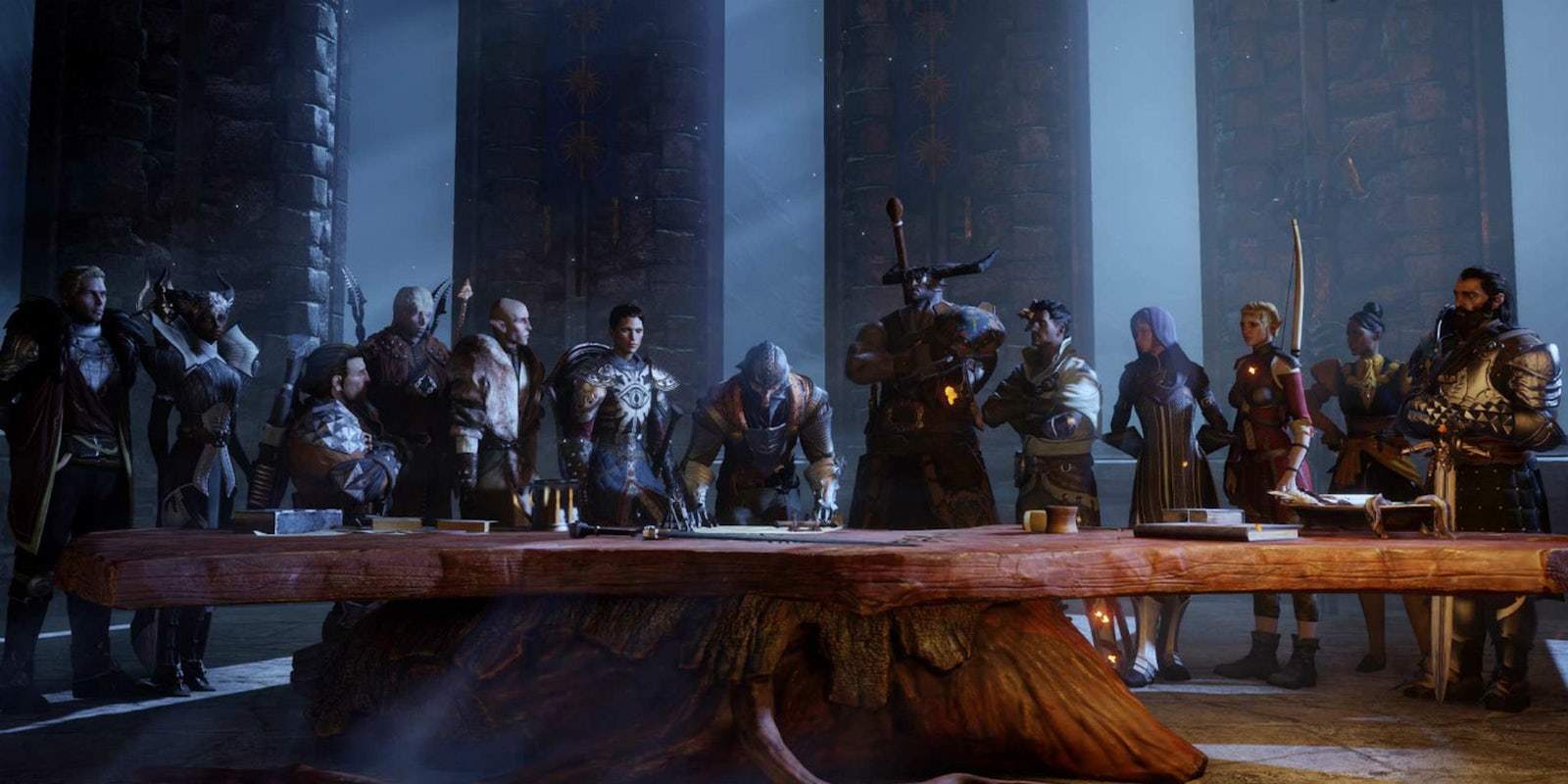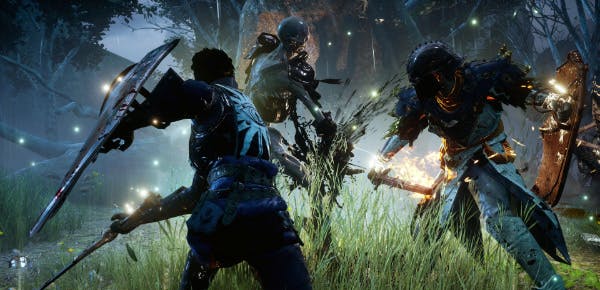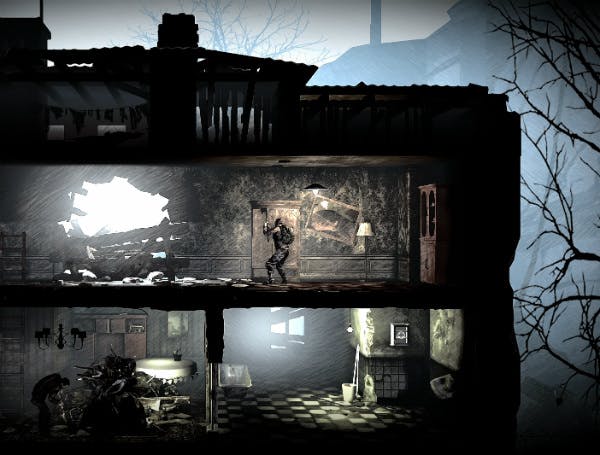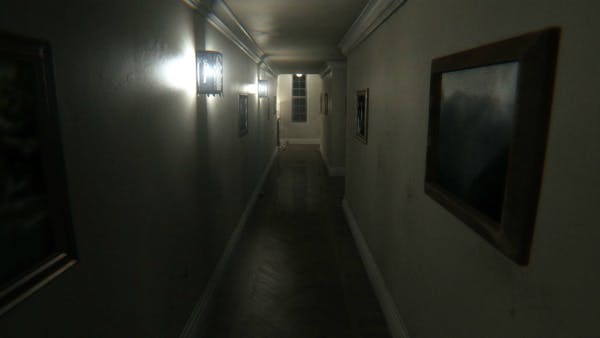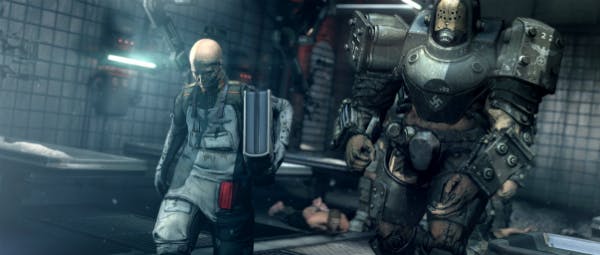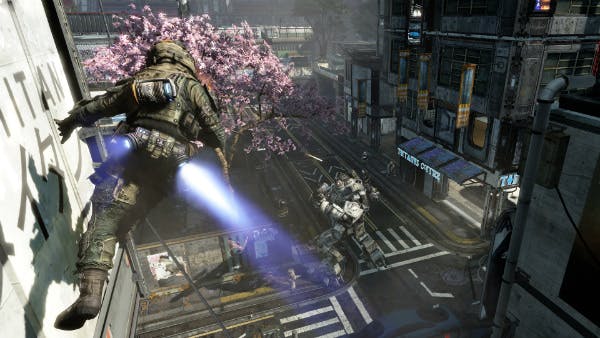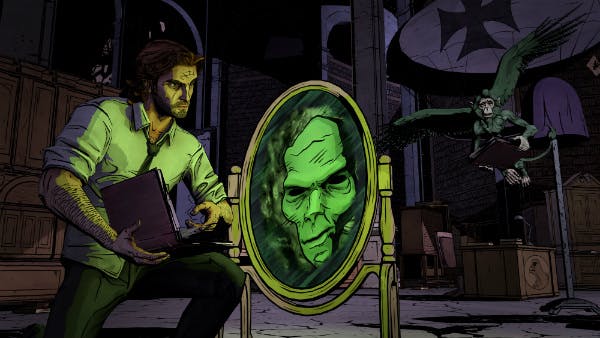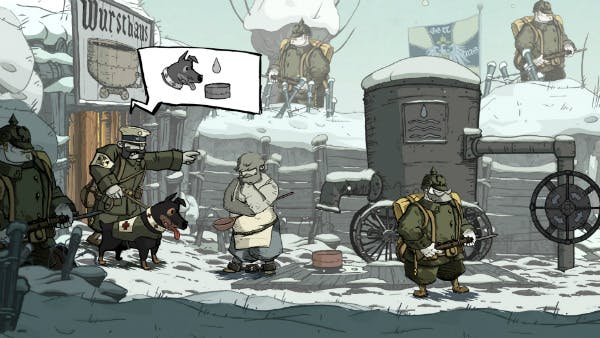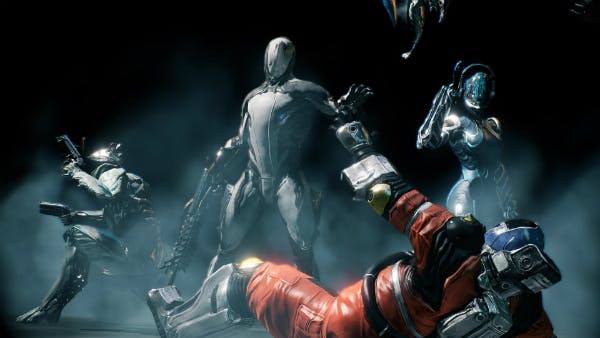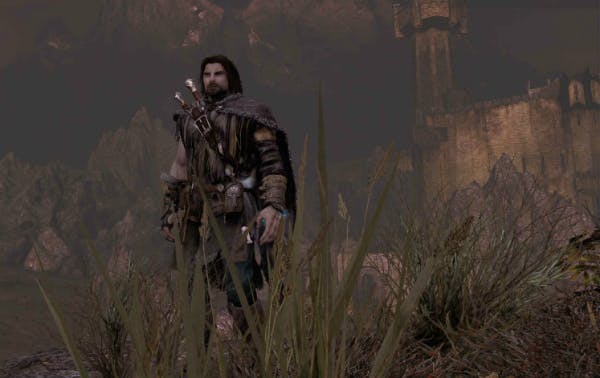The video games that make us feel the most joy, fear, anger, or hope, are the games we remember throughout the years.
These are the games we will look back on years from now, when we talk with friends about what was released in 2014. The games that provided the best emotional, intellectual, and skill challenges of what the mainstream video game industry had to offer.
These are the games that best justified the time, money, and energy we devoted to gaming throughout the year.
Dragon Age: Inquisition
Dragon Age: Inquisition brought back the scale and scope of the original Dragon Age: Origins, which first introduced us to the land of Thedas. Inquisition presents, within that huge canvas, distinct environments all of which offer moments of genuine beauty that are worth just stopping and looking at. Inquisition gave BioWare fans the most diverse and interesting group of party members of any BioWare role-playing game yet, giving the player control over the narrative in more subtle ways than just making large choices that define entire arcs of the plot.
Inquisition is a game where approaching a dragon is terrifying, and slaying one actually means something. It melds the best combat mechanics of Origins with Dragon Age II to provide a challenging experience that can satisfy fans of either game. Dragon Age: Inquisition is a masterpiece that defines what BioWare is capable of and exceeds the expectations of even its devoted fans.
This War Of Mine
This War Of Mine takes on the venerable, popular genre of military shooters, and questions whether those games ought to be thought of as having anything to do with the reality of war because of the way they glorify it. This War Of Mine shows us what takes place behind the lines of modern conflict and makes us question whether a game about war ought to be any fun at all.
Its characters fall to the depredations of conflict, like hunger and illness. They face the violence and terror that accompanies extreme desperation, when humanity turns on and eats itself. This War Of Mine can be an exercise in hopelessness that is also a beautiful demonstration of the emotional palate presented by video games, as a medium.
P.T.
We’re counting this as a full game, even if the initials stand for “playable teaser.” A teaser is usually a truncated game announcement that tells you nothing, but P.T. makes you work for that announcement by subjecting you to abject terror. It’s like a Twilight Zone episode you really shouldn’t have watched before going to sleep, because it’s tough to shake off the terror before you close your eyelids.
P.T. demonstrates the way photorealism can envelope a player in a video game’s illusion of reality. It’s an argument that games don’t have to be 200 hours long to provide fully realized visions that are satisfying and complete. It also shows the unique potential of video games to make advertising interactive. Most importantly, P.T. did something no other game did in 2014. It scared the living hell out of us.
Wolfenstein: The New Order
What better way to show what video games are capable of than to take the game that spearheaded the modern gaming era, Wolfenstein 3D, and transform it from a meatheaded exercise in shooting Nazis to a harrowing tale of a world gone mad? Developer MachineGames took the premise of The Man In The High Castle, an Axis victory in World War II, and pulled few punches in detailing the horror such a victory would have unleashed upon the Earth.
This is also not a world you’re supposed to enjoy, and Wolfenstein: The New Order gives you the chance to tear that world down. Shaped around this nightmare is a first-person shooter as unforgiving mechanically as the story is punishing emotionally. The end result is a game that demonstrates how first-person shooters can be orgies of destruction without necessarily dumbing themselves down.
Titanfall
Multiplayer first-person shooters are getting stale. They introduce slight variations on tried and tested mechanics that provide competitive experiences that stay fresh for only a matter of months. Titanfall challenges that status quo by introducing entirely new mechanics that change the way multiplayer shooters are played.
It’s not just the way Titanfall makes mech piloting the most intuitive it’s ever been, turning these engines of destruction into true extensions of their pilots’ bodies. Or the way something as simple as allowing defeated pilots to make a run for an evacuation dropship turns losing into an opportunity to still feel like victory. Titanfall combines these fresh experiences with a speed and fluidity of movement to create something unique. That’s probably why it doesn’t feel disposable, and it’s still the best console multiplayer shooter on the market.
Mario Kart 8
Nintendo has lagged behind its competitors this console generation in providing visual experiences that truly wow audiences. Mario Kart 8 brought that to an end by demonstrating just how good a Wii U game can look. In terms of arguments for why players should upgrade to a next generation console, Mario Kart 8 proved to be a definitive argument for Nintendo fans.
Mario Kart 8 also shows off Nintendo’s strength compared to its competitors in creating experiences casual enough to pass a controller around the living room to friends and family and challenging enough for hardcore gamers. It satisfied veterans of the long-running franchise, and enticed newcomers to take up their virtual steering wheels. Mario Kart 8 showed off the best of what Nintendo has to offer gamers today.
The Wolf Among Us
The Wolf Among Us might be the best interactive narrative game to date produced by Telltale Games. Who would have thought a cartoon world painted in such vibrant colors could also be so murky? Players get to decide just how bad, or how human, The Big Bad Wolf allows himself to be as he solves the mystery of a series of brutal murders in Fabletown.
The Wolf Among Us deftly draws upon its source material, the Fables comic book series, without feeling like fandom is a requisite to fully appreciate a universe of fairytale characters living in the real world. The pacing never slips from episode to episode. The plot defies prediction. The only problem with The Wolf Among Us is how high a bar it sets for Telltale.
Valiant Hearts
Valiant Hearts successfully toes the line between a serious game, and an entertainment game. It teaches us about the devastation of World War I, without burying us in its tragedy. The puzzles are simple, without pandering. It somehow manages to treat its subject matter with all due respect while weaving its tale around a cartoon art style, complete with thought bubbles. The music selections are as perfect as perfect gets.
It would be easy to dismiss Valiant Hearts for its simple presentation, but the game challenges that misassumption right from the get-go. The level of craftsmanship in Valiant Hearts is beyond reproach, such that you have to appreciate this game, even if a blend of education and traditional gaming is not your usual cup of tea.
Warframe
Warframe flew under a lot of peoples’ radars, and it shouldn’t have. It presents one of the most compelling science fiction universes in gaming in years, for just how alien that universe can be.
Warframe takes place in a far future where a race of warriors called the Tenno, who may or may not be human descendants, are awoken from cryosleep to discover a solar system at war. An army of diseased clones called the Grineer, a brutal arms dealing corporation named the Corpus, and a cavalcade of monsters called the Infested have taken over our worlds from Mercury to Neptune.
Warframe is part third-person action game where the Tenno use gun and blade, stealth and brute force, and their titular Warframe exoskeletons to fight through a huge number of missions on different planets. The level designs are randomly generated, which gives Warframe an extra level of challenge as well as heavy replay value.
Warframe is also part massively multiplayer online game. Players live on personal spacecraft where they can craft arms and equipment, and from which they can join other players to form Clans and fight for control of the spacelanes. And this deep, unique gaming experience is entirely free to play. I don’t think another game has offered an experience that is so decidedly a quality, traditional, core game experience as Warframe that also doesn’t cost players a dime.
Warframe is on PC, PlayStation 4, and Xbox One. We cannot recommend enough giving this game a try. It will surprise you.
Middle-earth: Shadow of Mordor
Middle-earth: Shadow of Mordor took the solid design of action-stealth games like Assassin’s Creed and Batman: Arkham Asylum and introduced to that design something unique. The Nemesis system fuels a changing power structure and political landscape among the Uruk of Mordor, the towering beasts that served Saruman and Sauron in the Lord of the Rings trilogy.
The more traditional narrative in Shadow of Mordor is about a pair of dead warriors, a Ranger and an elf-lord, whose spirits combine to take vengeance on the Uruk and their masters. The writing and performances are superlative. The Nemesis system provides a story within that story, which does not read from a script. The player creates the tale of how Uruk society thrives or falls, and it’s so compelling that this side adventure can actually be more satisfying that what even such a superbly performed, traditional adventure has to offer.
Photo via Electronic Arts/BioWare | Remix by Dennis Scimeca
